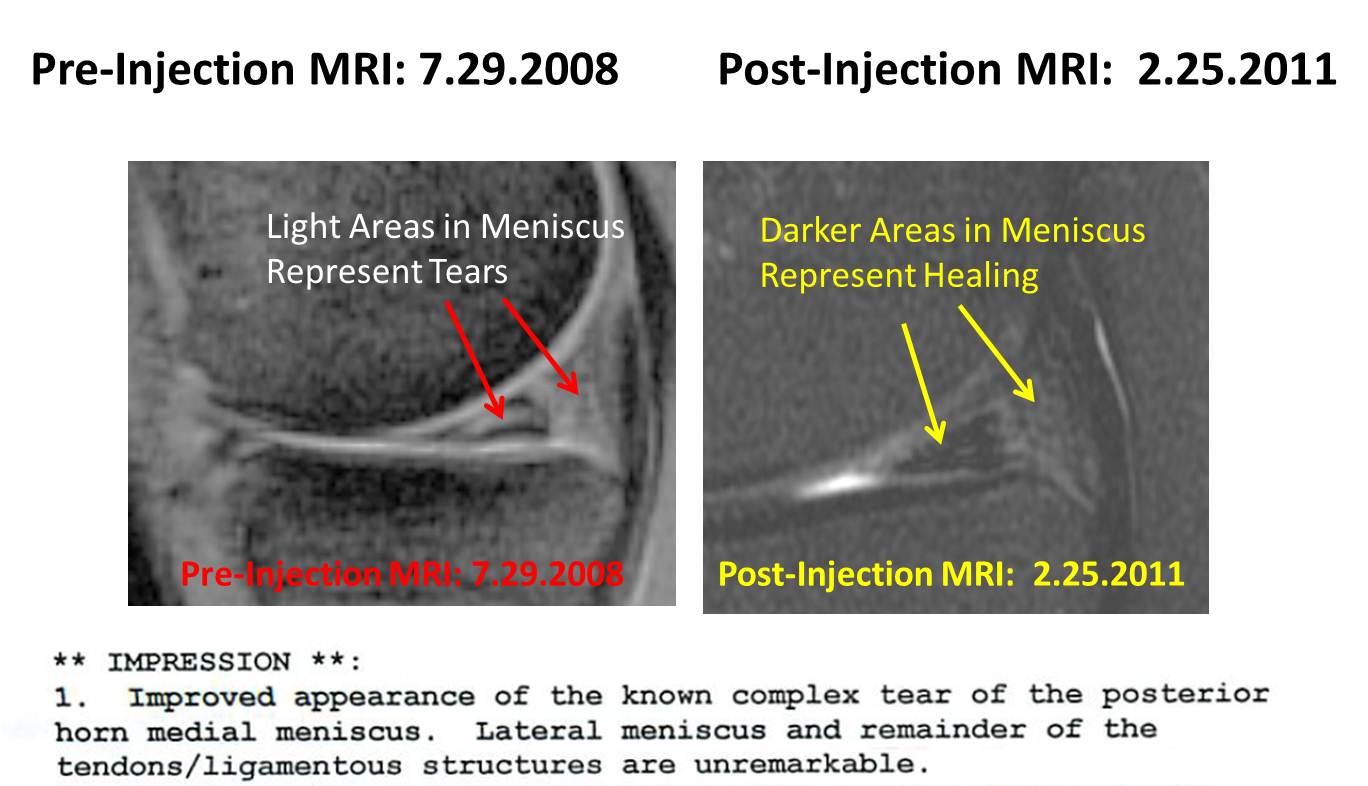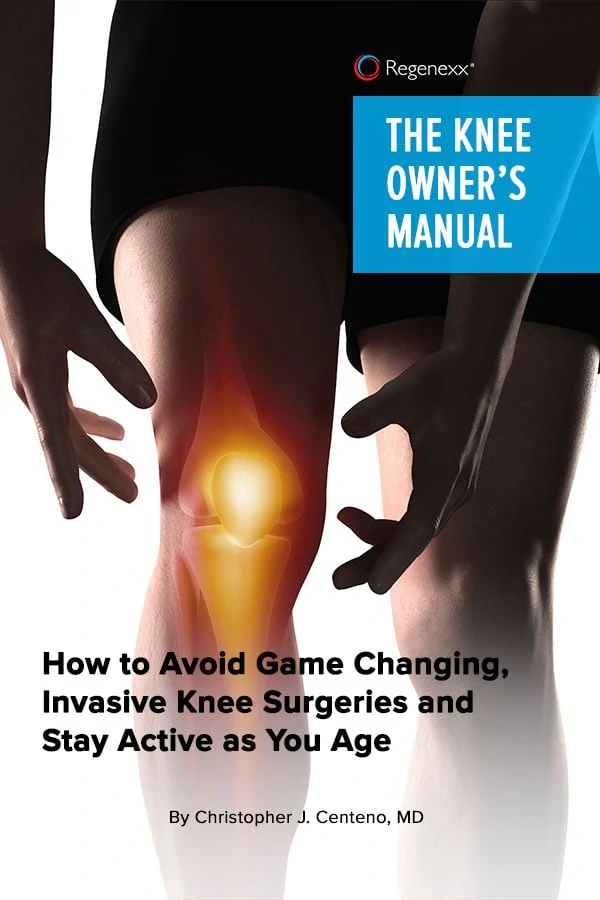Tears in the knee meniscus can cause pain and limit activity. Menisectomy is a surgical procedure in which a portion of the injured meniscus is removed. Knee meniscectomies are not without risk: they can advance the degenerative process, create instability in the knee, result in infection and exacerbate pain.
DG is an athletic 41 y/o patient who sustained a complex tear of the knee meniscus while roller blading. Conservative therapies in the form of PT, massage and chiropractic care failed to reduce his pain which he rated as 4/10 in severity. He declined surgical options and opted to use his own mesenchymal stem cells through the Regenexx Perc-MTI procedure.
On physical examination DG had tenderness along the medial aspect of knee along with a loose ACL. The ACL is a critical ligament in the knee as it prevent forward motion of the shin bone in relation to the thigh bone. Creating stability in the joint is paramount for optimal clinical success.
DG underwent therapy at the Centeno-Schultz Clinic which included prolotheraopy of the ACL under x-ray along with Regenexx C therapy in the posterior horn of the medial meniscus.
Want to Get Back to What You Love, Without Surgery and Medication?
Follow-up MRI was significant for ” improved appearance of the known complex tear of the posterior horn medial meniscus”. This corresponds will his clinical response. DG notes an 85% improvement in pain and 80% improvement in stability. He recently completed three days of snowboarding and is transitioning from his beach cruiser to a mountain bike.
Below are MRI images of the meniscus tear prior to and following Regenexx C therapy. The picture on the left was taken 9 months before the stem cell injection into the knee meniscus. Note the light areas in the triangle shaped meniscus represent weak areas and tears. On the left the red arrows identify the complex meniscus tear. The right picture was taken 22 months after the stem cell injection-note the darker appearance of the meniscus with less of the light areas representing weakness and tears. The yellow arrows on the right identify the areas of healing with the meniscus.

